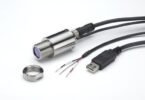The decision between where to focus, the inverter battery price or performance, is an age-old question. The question does not have a one-word answer, but the solution lies in understanding how both factors are interconnected. A compromise on either of the parameters can lead to high costs in the long run. But relying merely on these statements isn’t enough. Gaining insights into these aspects can help with independent, informed decision-making.
Why Battery Performance Matters for Power Backup?
A battery in an inverter system is an essential component that supplies the power to run the appliances. It stores the energy from the power grid in the form of DC and supplies it to the inverter for generating power. The choice of the right battery is the key to gaining access to reliable power backup. Here is how:
- Efficient power output: It ensures efficient running of the appliances by delivering consistent output. The delivered output will be in alignment with power ratings and frequency specific to the devices connected to the inverter.
- Longer backup duration: The batteries with quality performance can hold a charge for longer periods. They can also handle frequent charge-discharge cycles without quickly losing capacity. Thus, high performance will make them better suited for areas prone to extended blackouts.
- Cost-effectiveness: The battery is capable of delivering effective performance and also reduces energy wastage and improves efficiency. Thus, the direct impact is lower electricity bills.
- Faster charging efficiency: The better-performing batteries recharge quickly, thus reducing downtime between power cuts. It ensures the devices or systems are quickly back in operation.
- Better deep discharge tolerance: The premium batteries can handle deeper discharges without reducing lifespan, making them more reliable in frequent power cut scenarios.
How Inverter Battery Price Reflects Battery Quality and Lifespan?
Inverter battery price has a say in influencing the quality and lifespan of the battery. It does so in the following manner:
- Battery Capacity and Type
The battery capacity determines how long it can power the place during a power outage. Further, there is a wide variety of batteries, with distinct features. They can be categorised on the basis of efficiency, longevity and cost-effectiveness. The choice of the right battery involves considering the specific requirements in both aspects. The higher capacity and durability, along with advanced chemical composition and longevity, often come at a high cost.
- Technological Features
Batteries can be chosen based on the availability of effective features. It includes fast charging capabilities, deep discharge functionality and fewer maintenance requirements. These features enhance the battery life and efficiency, making them capable of serving in the long run. However, the presence of more features comes at a cost.
- Brand Reputation
The choice of battery from a reputed brand often comes with a higher inverter battery price. However, this ensures timely service support whenever required, including doorstep service and easy access to authorised service centres. The issues are resolved quickly, thus minimising the downtime of the product. The brand reputation also helps gain good after-sales services, access to skilled technicians and spare parts.
- Materials
Batteries manufactured using durable materials offer high safety, better thermal stability and longevity. They result in extended service life as well, with a significant reduction in internal wear and exhibiting high corrosion resistance. Benefitting from these features requires higher investment to ensure the incorporation of high-quality raw materials.
- Cycle Life
It refers to the number of complete charge-discharge cycles a battery can undergo before reaching the threshold before its usable capacity drops to around 70–80% of the original. The higher cycle life means the battery can deliver reliable performance for a longer period. This reduces the need for frequent replacements due to the presence of advanced electrode designs and better composition. While the cost-effective options may also be available, the trade-off would be lifespan.
- Safety
Batteries must be designed to operate safely. Choosing appropriately priced batteries offers access to more efficient safety features. These include less fume generation, short-circuit prevention, overcharge protection, durable casing and thermal stability.
- Build Quality and Durability
This presence of high build quality and durability makes the battery less prone to mechanical failures, electrolyte leaks and structural deformations. It also involves protection to internal components. These batteries can work efficiently regardless of the different environmental factors that may compromise their efficiency.
- Environmental Resistance
One of the essential requirements of a battery is its capacity to withstand environmental stresses and impacts. The high heat, humidity, dust and others are some of the negatively impacting factors. The ability to work efficiently through the presence of mechanisms to resist such challenges is among the features that come with a cost.
Final Thoughts
When choosing an inverter battery, rather than inclining towards either price or performance, striking a balance is beneficial. It helps gain the best of both worlds by fulfilling the requirements in each aspect. A cheaper battery may save money, but could lead to higher long-term costs. These are often accompanied by frequent maintenance requirements, reduced lifespan or inconsistent performance.
Alternatively, premium features, though they come at a certain expense, remain essential if they serve the usage needs. Hence, the smart approach is to prioritise essential performance factors like deep discharge, cycle life and other such factors.






